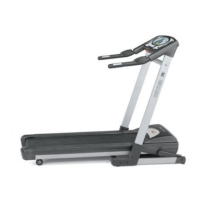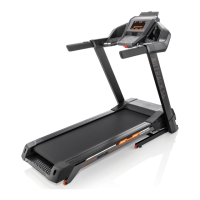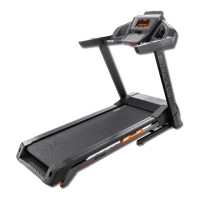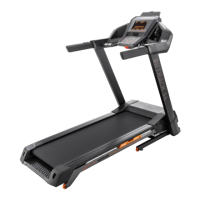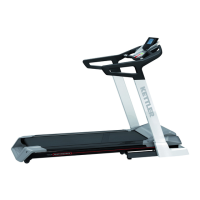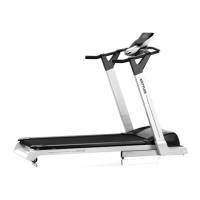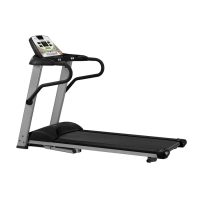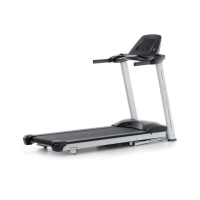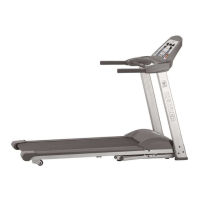Do you have a question about the Kettler TRACK S4 and is the answer not in the manual?
| Motor Power | 2.0 HP |
|---|---|
| Display | LCD |
| Foldable | Yes |
| Folding | Yes |
| Incline Levels | 12 levels |
| Training Programs | 12 |
| Weight Capacity | 120 kg |
| User Weight Capacity | 120 kg |
| Heart Rate Monitoring | Yes |
| Running Surface | 51" x 20" |
Details the Menu Display interface, including its header, graphical content area, and navigation bar.
Explains the Training Display, showing key performance data during active training and pause modes.
Details the 18 console buttons and their functions, covering start, stop, speed, and incline controls.
Explains the four additional buttons located on the handrails for gradient and speed adjustment.
Allows quick initiation of an open workout without presets or user data assignment.
Options to select, use as guest, or create new user profiles for personalized training.
Covers changing device settings and connecting to smartphones/tablets for app-based training.
Direct access to the last training session, preselected for quick resumption.
Lists all available training runs for the KETTLER Track Treadmill.
Tool to create custom individual workouts with detailed configuration options.
View personal overall performance and best workout results.
Allows user-specific adjustments like age or training level, affecting only the current user.
Enables linking with chest straps, smartphones, tablets, or PCs via Bluetooth for advanced training.
Guides connecting a heart rate sensor to the training display via the Bluetooth setup menu.
Connects the treadmill display via Bluetooth to smartphones/tablets for additional training programmes via apps.
Provides examples of compatible apps like KETTMaps and where to find more.
Instructions on how to fold the treadmill for compact storage and space-saving.
Details on how to lock the treadmill in its folded position and unlock it.
Steps for safely moving the folded treadmill using transport rollers.
Ensures the running belt is correctly positioned between markings before and during training.
Step-by-step guide to adjust the running belt to ensure it runs straight.
Instructions for tightening the running belt, with a caution against over/undertensioning.
How to correctly use hand pulse sensors for pulse measurement without Bluetooth.
Guidance on planning workouts based on current physical condition and avoiding overexertion.
Information on monitoring exertion intensity via heart rate, including max pulse and target zones.
Discusses optimal training duration, frequency, and intensity range (65-75% of performance).
Importance and duration of warm-up (3-5 min) and cool-down (2-3 min) for each session.
Breaks down walking, power walking, running, and sprinting into four distinct movement phases.
Key safety points for running workouts: setup, mounting/dismounting, safety key, shoes, and posture.
